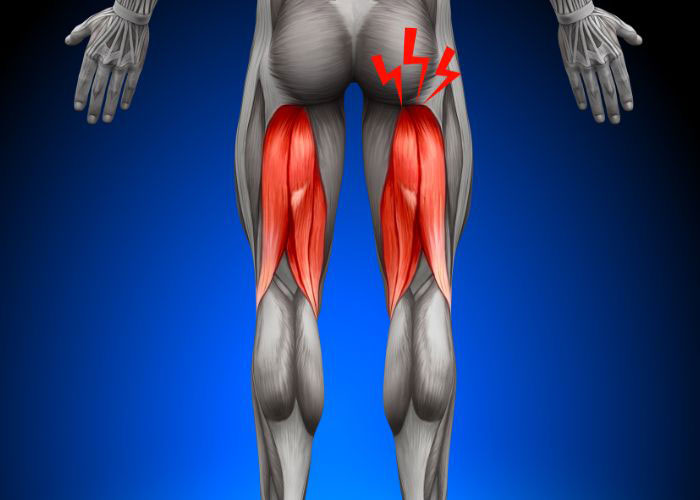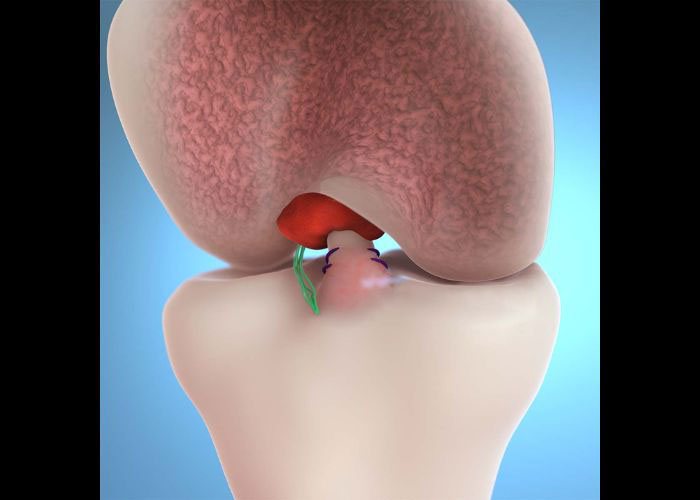What is a meniscal injury?
Between the ends of the femur (thigh bone) and tibia (shin bone) are two crescent-shaped discs of tough, rubbery connective tissue known as the meniscus. These discs act as shock absorbers to evenly distribute weight across the tibial surface. The medial meniscus absorbs up to 50% of the stress loaded on the inside compartment of the knee, while the lateral meniscus absorbs up to 80% of the stress loaded on the outside compartment of the knee. A meniscal injury can occur from unusual and violent twisting movements of the knee while the foot is firmly planted or a direct and forceful blow directly to the knee joint.
What is the treatment for a meniscal injury?
While small meniscal injuries may respond well to non-operative therapies, patients with significant meniscal damage may undergo surgical intervention, such as a partial meniscectomy, to remove the damaged tissue. On occasion, some patients may continue to experience knee pain and inflammation from the absence of the native meniscal tissue. Additional surgical correction to replace the meniscus entirely, known as meniscal transplant surgery, may be necessary for these patients. However, not all patients are good candidates for a meniscal transplant. Individuals less than 50 years old with knee pain, inflammation, and difficulty performing daily activities caused by an absent or non-functioning meniscus will benefit the most from a meniscal transplant. Dr. Ronak Mukesh Patel, orthopedic knee doctor, treats patients in Sugar Land, Pearland, and the Houston, Texas area, who have experienced a meniscal injury and are in need of a meniscal transplant.

How is a meniscal transplant surgery performed?
A meniscal transplant is one of the more technically challenging procedures that is performed in sports medicine. Therefore, it is important to consult an orthopedic doctor with extensive knowledge and training in performing a meniscal transplant.
Prior to surgery, a meniscal graft is obtained from a cadaver (allograft) and shaped specifically to the patient’s medial or lateral meniscus. While the allograft thaws, anesthesia is administered, and the patient is situated into the appropriate position. A small camera (arthroscope) and specialized surgical instruments are introduced to conduct the necessary revisions. Any remaining meniscus tissue is excised and removed and the site is prepared for graft implantation. A meniscal transplant involves securing it to the front and back of the knee and placing the graft in the correct anatomical position. The new meniscal graft is secured in place with special surgical sutures and fixation devices in the proximal tibia. Once the meniscal transplant is anchored in place, the graft is evaluated for stability and appropriate articulation between the bony structures of the knee joint.
What is the recovery period like after meniscal transplant surgery?
The recovery period following meniscal transplant surgery can be affected by a number of factors such as the patient’s age, medical history, and recovery goals. While minimally invasive arthroscopic procedures have repeatedly exhibited faster recovery times, the bones, tendons, ligaments, and cartilage still take the same amount of time to heal. The majority of patients can expect a full recovery with a return to normal daily and athletic activities in approximately 6 to 9 months. In general, patients in the Sugar Land, Pearland, and Houston, Texas area can anticipate the following:
- Weight-bearing will be considerably limited during the first 6 weeks after surgery. A patient can expect to use crutches or a walker during this post-operative period.
- Patients should generally avoid high-impact activities after meniscal transplant surgery to prevent graft failure.
- The key to a successful recovery following meniscal transplant surgery is active participation in the physical rehabilitation program designed by Dr. Patel. This program can last anywhere from 4 to 6 months, depending on any pre-existing conditions prior to surgery, and focuses on strengthening and improving range of motion.
Meniscal Transplant Surgeon

Studies have found that an injured meniscus that is able to be repaired, is better for the overall health of the knee than the removal of the meniscus. However sometimes the meniscus is too damaged to repair or is unable to heal. In those cases and for qualified patients, meniscal transplantation is the best alternative. Meniscal transplantation surgeon, Doctor Ronak Mukesh Patel, provides diagnosis as well as surgical alternatives for replacing the damaged meniscus for patients in Houston, Sugar Land, and Pearland, TX who are in need of a meniscal transplantation. Contact Dr. Patel’s team today!








